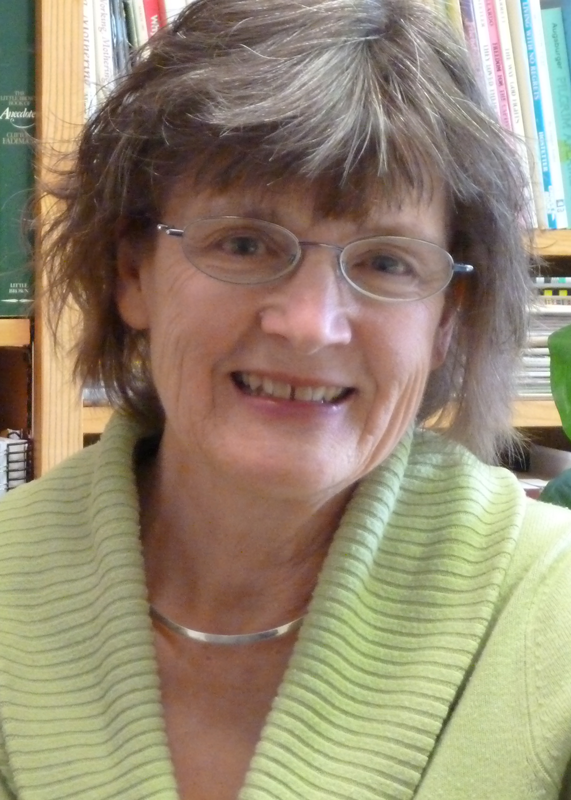Clumps of Trees Holding Hands
We enjoy visiting the churches our daughters are a part of when we get the chance to spend a Sunday or weekend in their community. Not only does it give us a taste of the spiritual nourishment they are getting and the people they see and pray with every week, but participating in their worship also offers us a chance to sample sermons from different pastors. It’s better than just being a straight-up cold-call visitor (so to speak) in a church you’ve never visited before and will likely never visit again—where the attachments and connections are nil.
Pederson talked about how the trees need each other—holding hands, so to speak—as they uphold one another. So it is with humans.
I frequently bring home the bulletins with notes and sometimes later use them for column or blog articles if I can still piece together the inspiration I received on that Sunday morning.
Several months ago the sermon at one daughter’s Presbyterian church was on “community”—an important, dare I say crucial, aspect of our faith life. Pastor Pederson pointed out that the huge, ancient sequoia trees along the western coast of the United States always grow together in groves; the roots spread out over large areas, “sometimes up to half an acre in well drained soils” according to University of California Forest Outreach website. The roots tend to entwine together and end up supporting each other. The roots don’t go deep (usually not deeper than about three feet), but together they withstand storm, flood, and even raging forest fires.
 I immediately connected to this sermon, because my husband and I were able to visit Sequoia National Park in California in 2013. In eight days spent out west, it was one of the absolute highlights for both of us. We were fascinated about the fragile beginnings of each seedling; but thousands of the trees are centuries old—some back to the times when Jesus and Socrates and Plato walked the earth.
I immediately connected to this sermon, because my husband and I were able to visit Sequoia National Park in California in 2013. In eight days spent out west, it was one of the absolute highlights for both of us. We were fascinated about the fragile beginnings of each seedling; but thousands of the trees are centuries old—some back to the times when Jesus and Socrates and Plato walked the earth.
Pederson talked about how the trees need each other—holding hands, so to speak—as they uphold one another. So it is with humans, especially in the Christian context. There are those who try, and perhaps succeed, in living a faithful life without belonging to a Christian community or church. But most of us need the nourishment, nudging, and companionship of others. Pederson added that Christian community is not something that is automatic or created by humans. Feeling true community—which is an emotional and spiritual state in addition to a physical one—is a gift of God through Christ.
The pastor also mentioned a story from one of his favorite authors, Anne Lamott. I found it later online, where she talks about her son Sam when he was just seven years old. She said she makes him go to church on Sundays even though none of his friends go because “I can. I outweigh him by nearly 100 pounds. But that is only part of it. The main reason is that most of the people I know who are doing well psychologically . . . who have what I want—connection, gratitude, joy—are people in community” (Christianity Today, Winter 2003; italics mine).
The title—“Why Sam Goes to Church”—leaped out at me, partly because of my own grandson named Sam. Anne Lamott’s own history with church—which she absolutely turned away from for the early part of her life—can give all of us hope for future generations. Anne said that her Sam was nurtured in that church, with women vying for a chance to hold him as a baby, and later by practical example. One elderly woman was named Mary. Mary would often slip baggies full of carefully saved dimes into Anne’s pocket before she became the famous semi-wealthy writer she is today. In return, Anne would nudge her young son to give dear Mary a hug. (I’ve since read another article saying that Lamott’s Sam is now a father and still goes to church. Yay Sam, Anne, and God.)
The path is rocky for many, but I pray for clumps of doting, loving parishioners to surround your children, grandchildren, and mine—holding hands and demonstrating what it means to love God and our fellow human beings.

Comments? Stories to share? Post below or send to MelodieD@MennoMedia.org; by mail send to Another Way, 1251 Virginia Ave., Harrisonburg, VA 22802.




